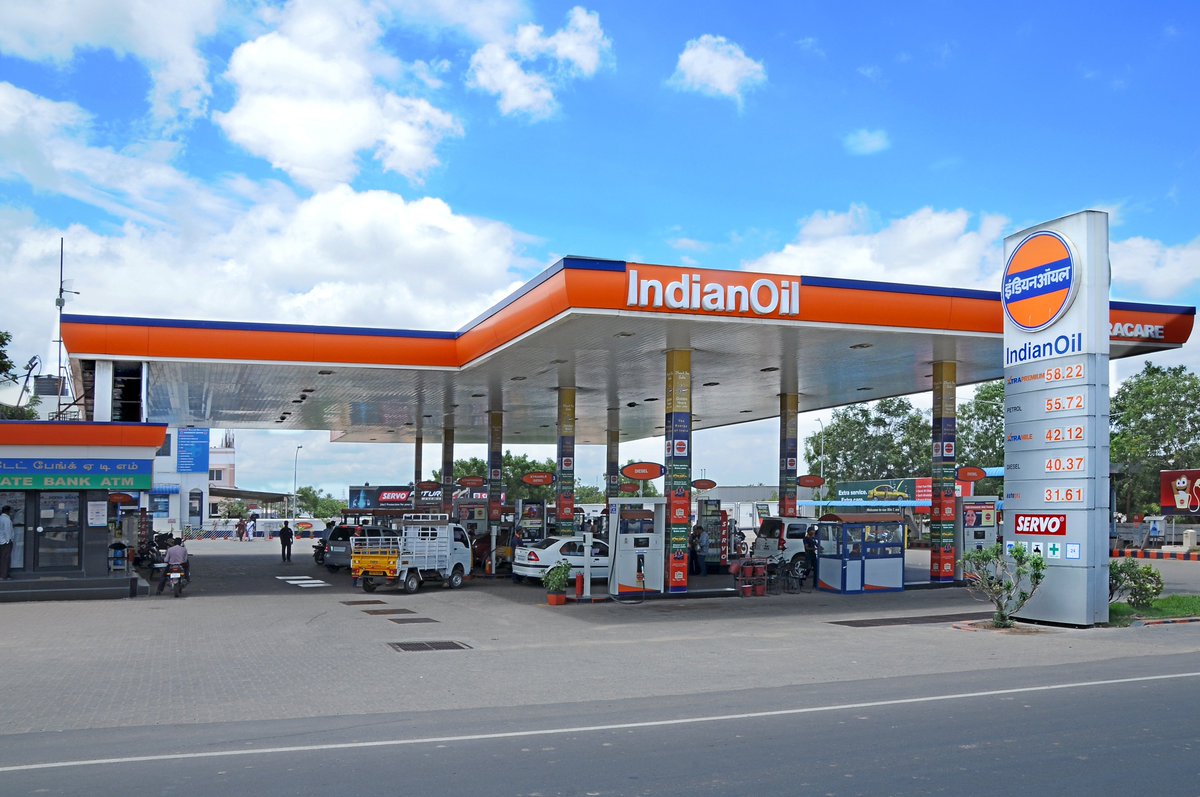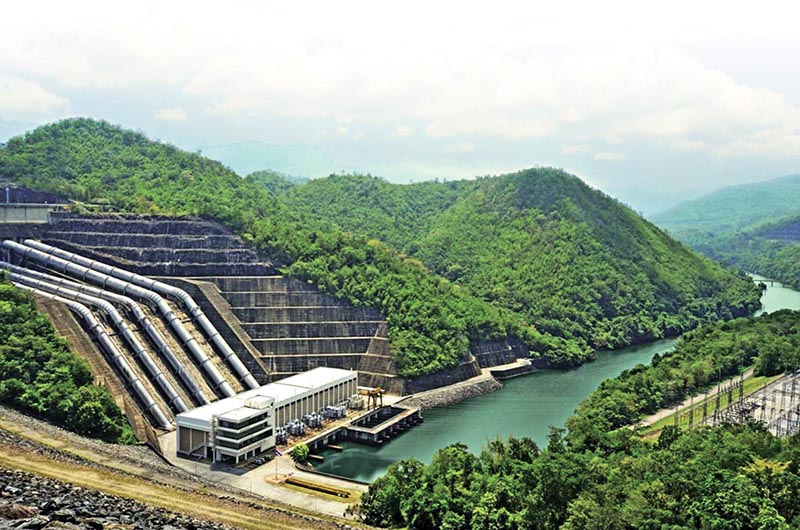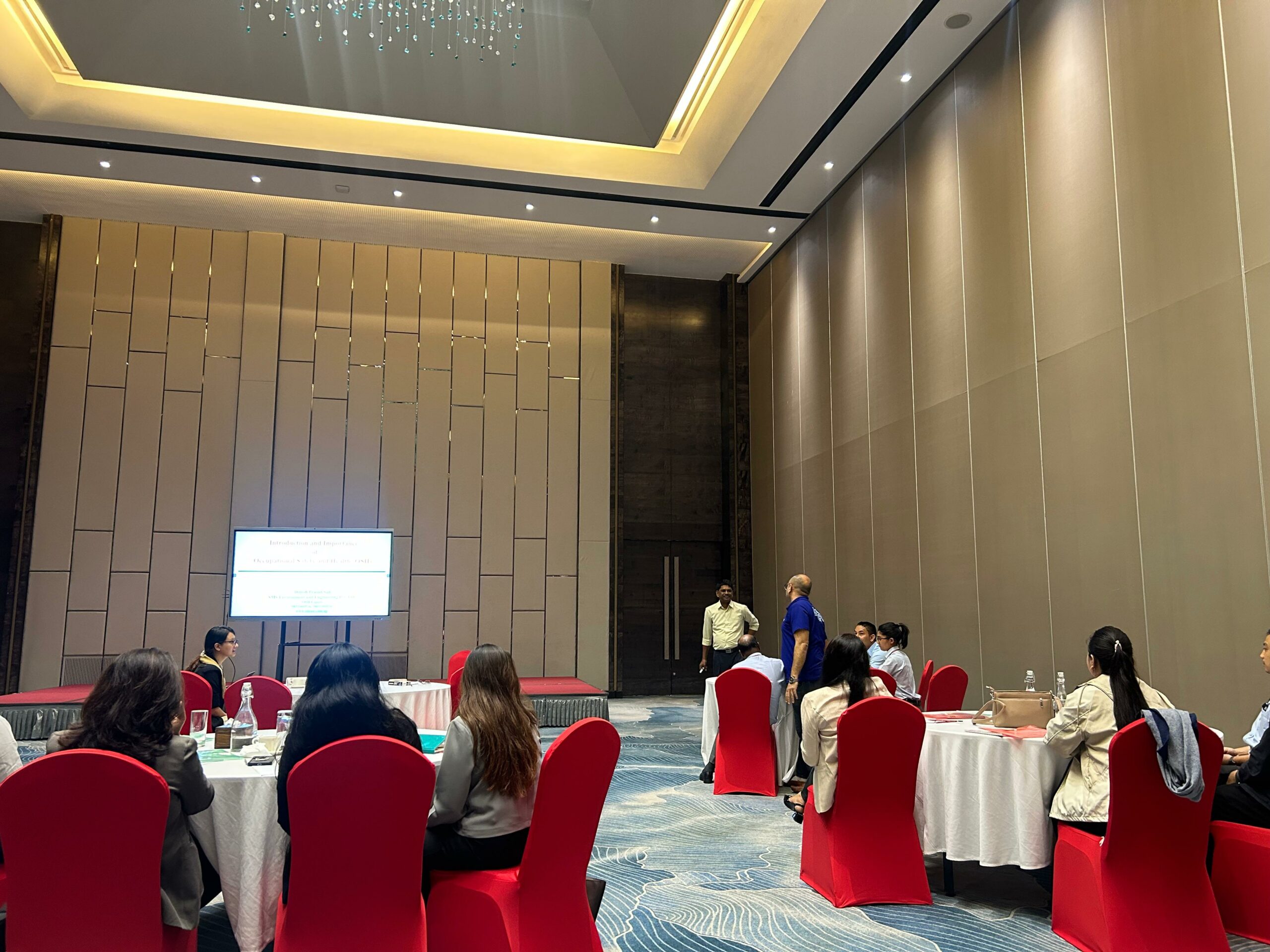Bhairahawa airport to open on May 16, but Modi won’t land there
Nepal’s second international airport, which has failed to market itself, would have drawn attention if the Indian prime minister landed there, officials say.
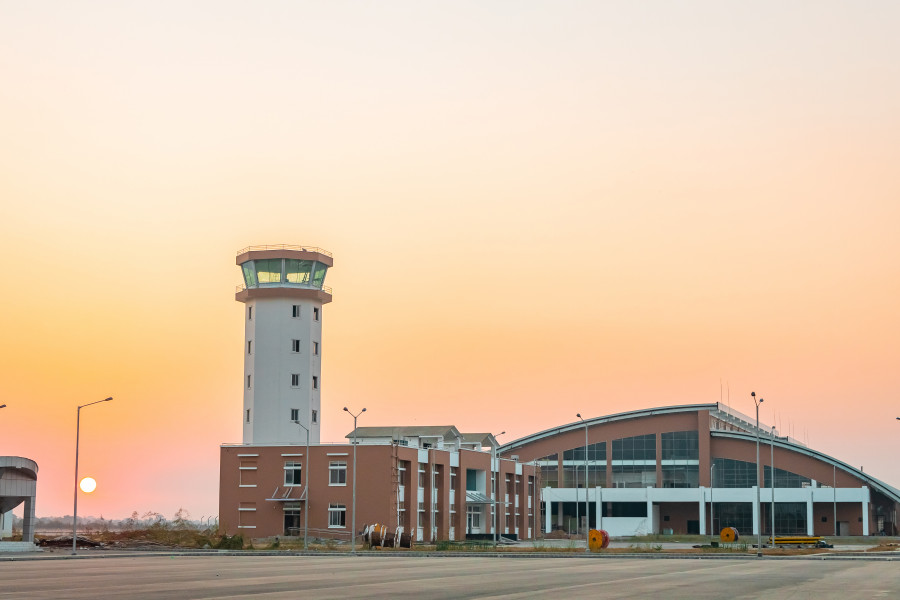
KATHMANDU: MAY. 10 – An Airbus A320 of Jazeera Airways of Kuwait is scheduled to touch down at Gautam Buddha International Airport in Bhairahawa on Monday morning and taxi into Nepal’s aviation history.
The arrival of the direct service from Kuwait at 7 am will mark the official inauguration of Nepal’s second international airport 73 years after Kathmandu.
Hundreds of high-level government officials and members of the diplomatic community will be attending the inaugural ceremony planned for the thrice-blessed day of Buddha Jayanti when the Buddha was born, attained enlightenment and passed into nirvana.
The airport has been envisaged as the international gateway to Lumbini, the birthplace of the Buddha located 18 km from Bhairahawa.
“Prime Minister Sher Bahadur Deuba will be inaugurating the new airport,” Govinda Prasad Dahal, general manager of Gautam Buddha International Airport, told the Post. “We have almost completed the preparations.”
At the same time as the inauguration ceremony, Indian Prime Minister Narendra Modi will overfly the new airport and land in Lumbini.
Four helipads are being constructed on the premises of Lumbini, which is a World Heritage Site, for Modi’s visit.
From the airport, Deuba is scheduled to travel to Lumbini to officially open the International Meditation Centre and Assembly Hall at 10 am. He will meet his Indian counterpart in Lumbini and the two heads of government will participate in a special function organised by the Lumbini Development Trust.
Deuba and Modi are scheduled to lay the foundation stone for a vihar to be built with Indian assistance in the Lumbini area.
But there’s something.
Modi will skip the airport. He will directly land in Lumbini instead.
Officials said they don’t know why.
“No idea,” said an official at the Civil Aviation Authority of Nepal.
A former chief of the civil aviation body told the Post that it was a “diplomatic failure.”
“When two separate big events are held at the same place, one event will definitely be in the shadows,” said Sanjeev Gautam, former director-general of the Civil Aviation Authority of Nepal. “It’s a weakness on Nepal’s side. Nepal’s diplomacy, either economic or aviation, has always remained poor. We failed again.”
Nepal’s second international airport is located 6 km from the Nepal-India border in the south. It was 10 years in the making and cost nearly Rs40 billion.
Located in the plains of south-central Nepal and spread over 787 bighas (533 hectares), Gautam Buddha International Airport is a landmark, according to tourism industry insiders.
The modern facility has a 15,169 square-metre terminal building with a capacity to serve nearly a million passengers a year.
The airport’s 3,000-metre runway is long enough to handle the largest commercial jets.
Several Nepali officials familiar with the development told the Post that the Nepal government should have urged the Indian side to have Modi’s special flight land at the newly constructed international airport.
“Either Modi should have come to Kathmandu and taken a special flight to Lumbini or if he is travelling directly to Lumbini, he should have flown from Kushinagar International Airport in Uttar Pradesh to Gautam Buddha International Airport as both sites are related to the Buddha’s life,” a Nepali official told the Post. “That would have been a win-win situation. If Modi would land at the new airport and travel to Lumbini by greeting the people, that would send a very positive message to both sides.”
According to the official, if Nepal did not have a dedicated airport near Lumbini, the construction of helipads on the premises of Lumbini would have made sense.
“If we have an airport, we should tell and pursue the Indian side for his arrival first at the airport as that will also show acknowledgement of our development endeavours by India,” said the official.
Is it because the airport was constructed with Chinese involvement?
Maybe.
A senior security official said that since the airport was constructed by a Chinese company—China’s Northwest Civil Aviation Airport Construction Group—the Indian side is hesitant to land at Gautam Buddha International Airport.
“We are also hearing that a high-level delegation may arrive from China on that day to celebrate the completion of the airport. So, that makes the Indian side a bit hesitant to land at the newly built airport. We are quite aware of this kind of geopolitical competition,” the security official added. “Since the new airport in Bhairahawa is the first port of entry, Nepal should pursue the Indian side to land first at the airport.”
A senior official at the Ministry of Culture, Tourism and Civil Aviation said that Nepal did push it with the Indians about Modi’s arrival in Lumbini via Gautam Buddha International Airport, but the Indian side replied that if he was coming by plane, he would have landed at the airport.
“Since Modi decided to come by helicopter from Kushinagar, it was decided to construct helipads inside the UNESCO Heritage Site,” said the official who spoke on the condition of anonymity.
Nepal and India have never been on the same page when the promotion of the Buddhist Circuit comes to the fore because of the larger geopolitical game.
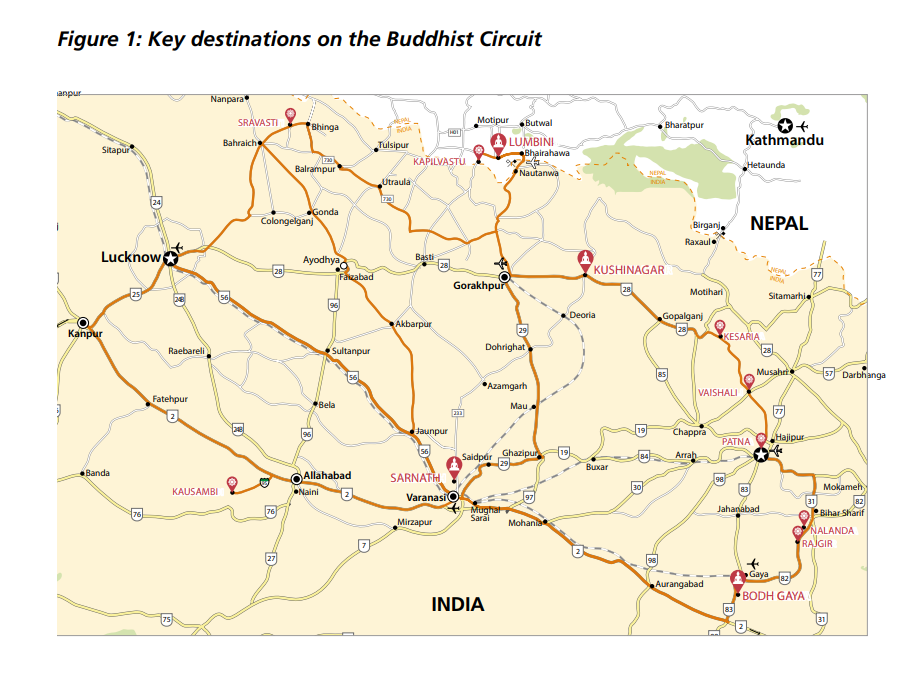
In November 2018, former tourism minister the late Rabindra Adhikari floated a new idea with China: Develop the Trans-Himalayan Buddhist Circuit when India had been working on an ambitious “billion dollar” plan to develop and promote the Buddhist Circuit in India with the involvement of the World Bank.
According to the International Finance Corporation (IFC), a member of the World Bank Group, the Buddhist Circuit is an important pilgrimage destination for the 450 million practising Buddhists as well as travellers interested in history, culture or religion.
There are about 450 to 480 million Buddhists across the world, the IFC report said. They practice different branches of Buddhism. Mahayana Buddhism, including East Asian Buddhism, has 185 million followers. This is the predominant form of Buddhism practised in China, South Korea, Japan, Taiwan, Singapore and Vietnam.
Theravada Buddhism, with over 125 million followers, is the form of Buddhism predominantly practised in Cambodia, Thailand, Laos, Sri Lanka, Myanmar and India.
Vajrayana Buddhism has approximately 20 million followers. This form is practised in the greater Tibetan and Mongolian regions, the Himalaya, Bhutan, parts of western China, the Russian Federation and Nepal.
The report said that the rationale for investing in the Buddhist Circuit in India was to improve the experience of visiting these sites and link that to the potential of tourism to deliver sustainable and inclusive economic growth through job creation and income generation opportunities.
Besides the religious and cultural aspects, Nepal and India have always remained at odds over opening new routes to facilitate the construction of new airports in Nepal.
“Nepal has failed on all sides in terms of pursuing diplomacy,” said Birendra Bahadur Basnet, managing director of Buddha Air, Nepal’s largest private carrier. “The people who have been given a responsibility to fundamentally lobby for economic and other diplomacy failed to pursue their duties. It is pathetic that large denomination Indian currency notes are banned in Nepal.”
According to Basnet, in terms of air connectivity, Nepal and India have always been acting indifferently.
Nepal on different occasions has been requesting India to open more air entry points for more than a decade.
Since Nepal decided to construct a few new international airports, it had asked India to open new cross-border air routes via Janakpur, Bhairahawa, Nepalgunj and Mahendranagar.

During Modi’s visit to Kathmandu in August 2014, the issue got traction and the airspace agenda was endorsed.
A joint communiqué issued by the two countries at the end of the visit said: “The cross-border direct routes will facilitate flights between regional airports in Pokhara and Bhairahawa, and this will save time and money for air travellers and also improve air connectivity between India and Nepal.”
Subsequently, the prime ministers of the two countries directed the authorities concerned to meet in the next six months to resolve the issue. Based on this instruction, Nepal and India agreed to make Kathmandu-Mahendranagar-Delhi (L626) route bi-directional or two-way in 2016. But it is yet to be implemented.
“If this route is implemented, it will benefit Indian airlines too,” said Basnet. “Flights from Bagdogra in West Bengal will not need to make a curve and bypass Nepali airspace if the route is implemented. It will save time and cost for Indian airlines. There has been no progress on this front.”
According to senior officials of Nepal’s civil aviation body, the Indian side has been expressing reservations over the opening of the airspace in Bhairahawa and Nepalgunj due to the presence of its defence base in Gorakhpur. The defence base is spread over huge swathes of land, where fighter jet exercises are conducted regularly.
They had hinted at opening some sections of the airspace over Nepalgunj. But that too failed.
Nepal has been pushing the agenda of expanding cross-border air routes for over a decade, as there is only a single entry point in Simara for most of the airlines flying to the country. In contrast, there are seven exit points—Bhairahawa and Mahendranagar in the west and Simara, Biratnagar, Tumlingtar, Kakarbhitta and Janakpur in the east—for aircraft flying out of Nepal.
Besides Simara, two other entry points over Mechi and Tumlingtar (Nonim which is in the east of Mt Everest) have been specially designated for planes coming from Bhutan and Lhasa, respectively. But the entry point in Simara is used by the majority of aircraft flying to Nepal and is therefore congested most of the time.
Officials said that the prime ministers of both countries will again discuss the issue in Lumbini because Gautam Buddha International Airport will not be financially and technically feasible if India does not allow aircraft to enter Nepal from one of the proposed cross-border air routes in Bhairahawa, Nepalgunj or Mahendranagar.
For example, if an international flight headed for Gautam Buddha International Airport in Bhairahawa from western Nepal or New Delhi is not allowed to use airspaces in Bhairahawa, Nepalgunj or Mahendranagar, it has to fly an extra 300 km in the aerial distance before landing at the airport, according to Tourism Ministry documents.
This means aircraft coming from western Nepal will first have to fly to Simara from above Bhairahawa before landing at the airport. Surprisingly, aircraft flying above Bhairahawa cannot land at the airport there because it would be using Indian airspace at that time and thus has to go to Simara first. This lengthy process of landing at Gautam Buddha International Airport will raise the operating costs of airlines and make flights costly.
The same problem will be faced by another international airport which is coming up in Pokhara if new cross-border air routes do not come into operation soon. The airport is expected to be completed by July 10, 2022.
The ministry’s documents say that Pokhara-bound international flights from western Nepal will have to cover an additional 185 km in the aerial distance if the new cross-border air routes are not opened.
The importance of air routes was realised when the plans of Nepali carriers to expand cross-border flights were thwarted by the absence of adequate entry points.
Nepali carrier Buddha Air had to abandon its plan to operate Pokhara-Bhairahawa-Lucknow flights due to the air route problem. It had been allowed to fly from Pokhara to Lucknow; but on the return flight, it had to enter Nepal through the Simara point which made the service economically unviable.
The last time Nepal opened additional air routes was on November 19, 2009, when the L626 passing over Dhangadhi was launched. The Indian government approved the L626 route as per the air service agreement signed between the two countries in September of the same year.



